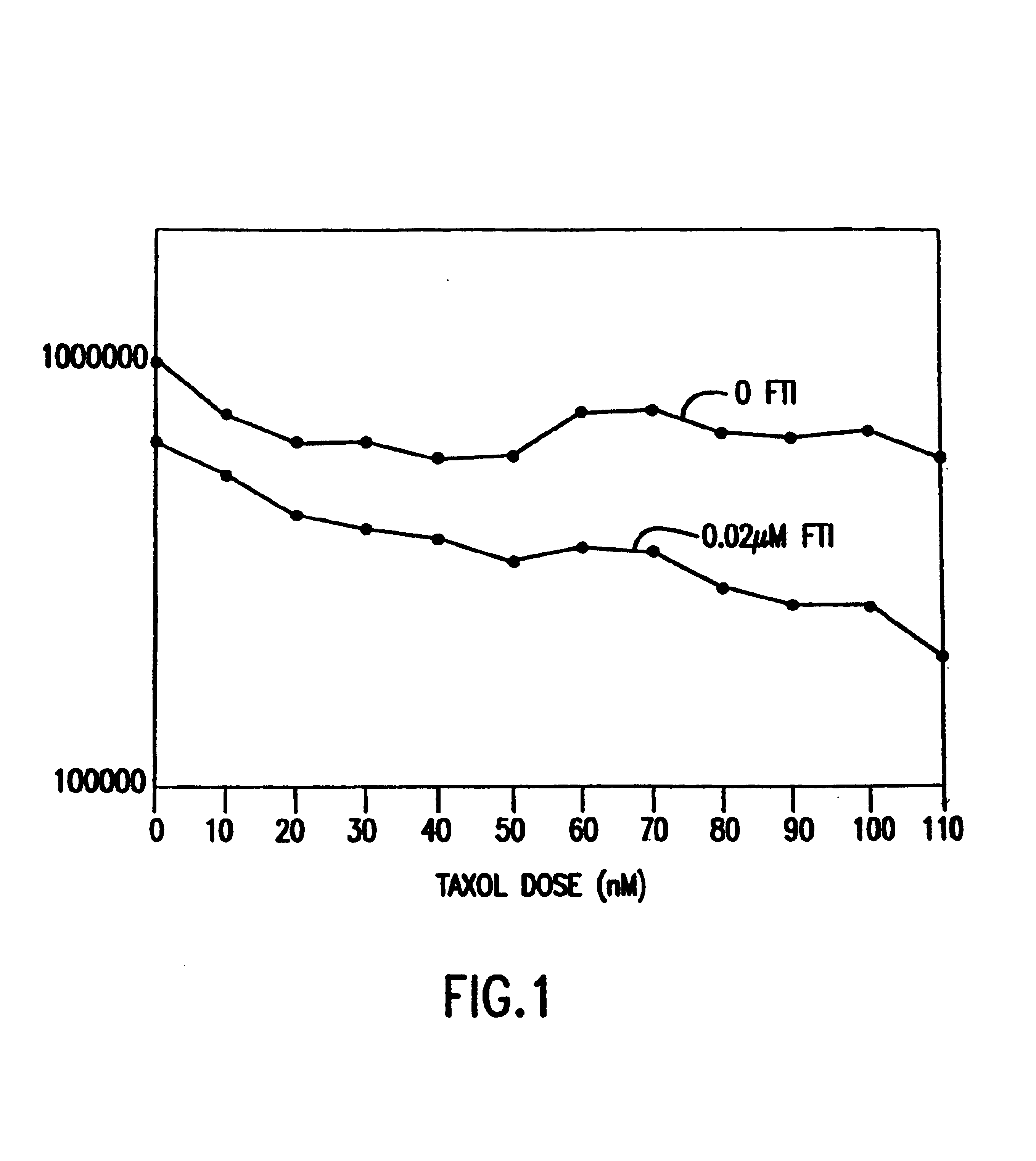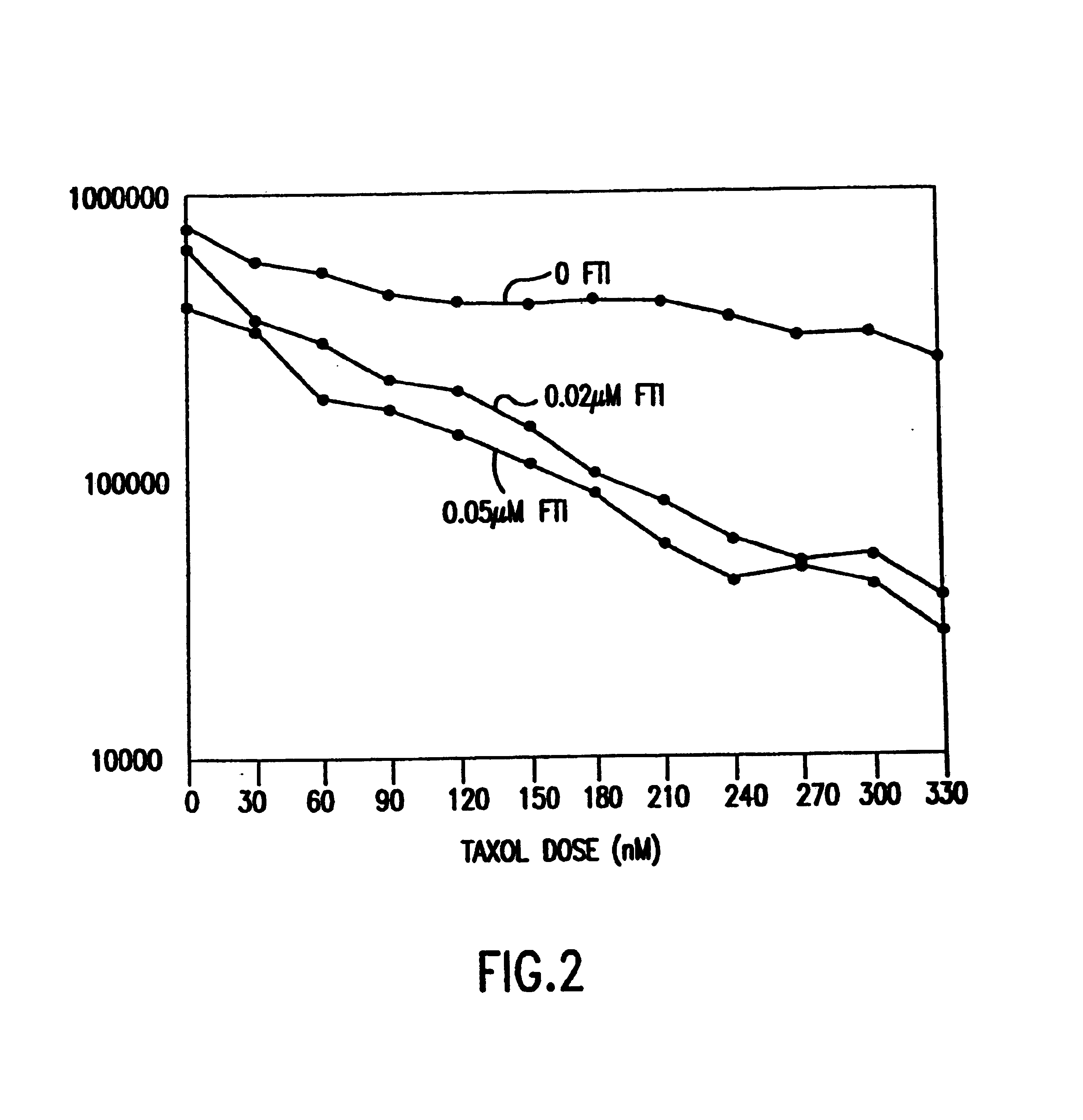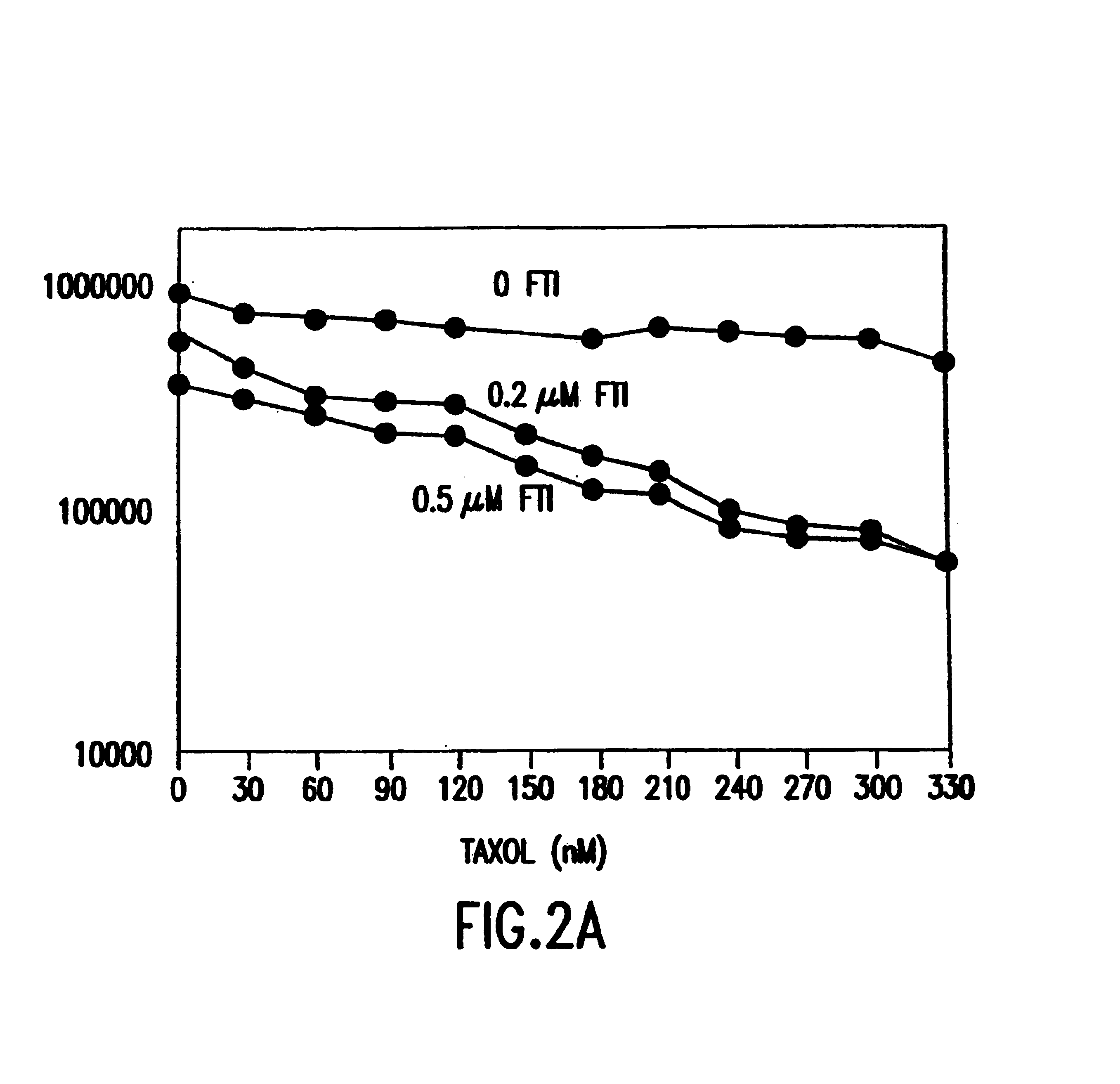Method of treating cancer
a cancer and cancer technology, applied in the field of cancer treatment methods, can solve problems such as limiting the doses physicians can administer
- Summary
- Abstract
- Description
- Claims
- Application Information
AI Technical Summary
Benefits of technology
Problems solved by technology
Method used
Image
Examples
example 1
(S)-1-(3-chlorophenyl)-4-[1-(4cyanobenzyl)-imidazolylmethyl]-5-[2-(methanesulfonyl)ethyl]-2-piperazinone dihydrochloride
Step A: 1-triphenylmethyl-4-(hydroxymethyl)-imidazole
[1107]To a solution of 4-(hydroxymethyl)imidazole hydrochloride (35.0 g, 260 mmol) in 250 mL of dry DMF at room temperature was added triethylamine (90.6 mL, 650 mmol). A white solid precipitated from the solution. Chlorotriphenylmethane (76.1 g, 273 mmol) in 500 mL of DMF was added dropwise. The reaction mixture was stirred for 20 hours, poured over ice, filtered, and washed with ice water. The resulting product was slurried with cold dioxane, filtered, and dried in vacuo to provide the titled product as a white solid which was sufficiently pure for use in the next step.
Step B: 1-triphenylmethyl-4-(acetoxymethyl)-imidazole
[1108]Alcohol from Step A (260 mmol, prepared above) was suspended in 500 mL of pyridine. Acetic anhydride (74 mL, 780 mmol) was added dropwise, and the reaction was stirred for 48 hours during...
example 2
1-(3-chlorophenyl)-4-[1-(4-cyanobenzyl)imidazolyl-methyl]-2-piperazinone dihydrochloride
Step A: N-(3-chlorophenyl)ethylenediamine hydrochloride
[1119]To a solution of 3-chloroaniline (30.0 mL, 284 mmol) in 500 mL of dichloromethane at 0° C. was added dropwise a solution of 4 N HCI in 1,4-dioxane (80 mL, 320 mmol HCI). The solution was warmed to room temperature, then concentrated to dryness in vacuo to provide a white powder. A mixture of this powder with 2-oxazolidinone (24.6 g, 282 mmol) was heated under nitrogen atmosphere at 160° C. for 10 hours, during which the solids melted, and gas evolution was observed. The reaction was allowed to cool, forming the crude diamine hydrochloride salt as a pale brown solid.
Step B: N-(tert-butoxycarbonyl)-N′-(3-chlorophenyl) ethylenediamine
[1120]The amine hydrochloride from Step A (ca. 282 mmol, crude material prepared above) was taken up in 500 mL of THF and 500 mL of sat. aq. NaHCO3 soln., cooled to 0° C., and di-tert-butylpyrocarbonate (61.6 ...
example 3
Preparation of N-(2(R)-amino-3-mercaptopropyl)-valyl-isoleucyl-leucine methyl ester (Compound 3-1)
Step A. Preparation of N-(2(R)-t-butoxycarbonyl-amino-3-triphenyl-methylmercaptopropyl)-valyl-isoleucyl-leucine methyl ester
[1125]The tripeptide ester valyl-isoleucyl-leucine methyl ester was synthesized using conventional solution phase peptide synthesis methods. The trifluoroacetate salt of this tripeptide (360 mg, 0.77 mmol) was dissolved in 5 mL of methanol with 147 mg (1.5 mmol) of potassium acetate and 670 mg (1.5 mmol) of N-Boc-S-tritylcysteinal (prepared using the procedure of Goel, Krolls, Stier, and Kesten Org. Syn. 67: 69-74 (1988) for the preparation of N-Boc-leucinal) was added. Sodium cyanoborohydride (47 mg, 0.75 mmol) was added and the mixture was stirred overnight. The mixture was diluted with ether and washed with water, 5% ammonium hydroxide and brine. The solution was dried (sodium sulfate) and evaporated to give a white foam which was purified by chromatography (1-1...
PUM
| Property | Measurement | Unit |
|---|---|---|
| temperature | aaaaa | aaaaa |
| volume | aaaaa | aaaaa |
| volume | aaaaa | aaaaa |
Abstract
Description
Claims
Application Information
 Login to View More
Login to View More - R&D
- Intellectual Property
- Life Sciences
- Materials
- Tech Scout
- Unparalleled Data Quality
- Higher Quality Content
- 60% Fewer Hallucinations
Browse by: Latest US Patents, China's latest patents, Technical Efficacy Thesaurus, Application Domain, Technology Topic, Popular Technical Reports.
© 2025 PatSnap. All rights reserved.Legal|Privacy policy|Modern Slavery Act Transparency Statement|Sitemap|About US| Contact US: help@patsnap.com



